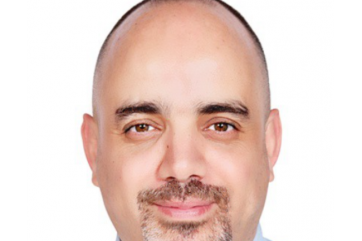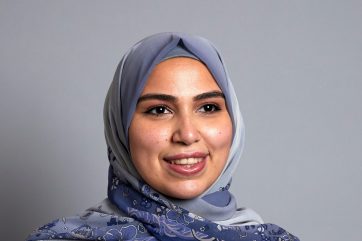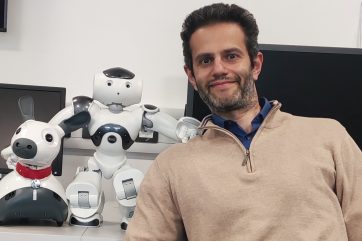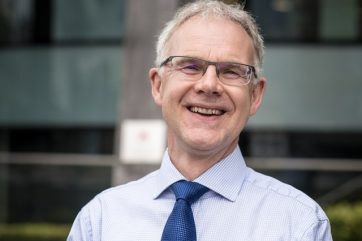SPOTLIGHT – Carlos shares how his research is mitigating the effects of climate change
Welcome to another Spotlight feature for our Friday Round Up where we showcase research stories and shine a light on the people that make up the Industry and Innovation Research Institute (I2Ri). Alongside the BreakThru podcasts on spotify hosted by Marjory Da Costa-Abreu, we hope this will be a great way to celebrate our successes and get to know one another more.
This edition, we caught up with Carlos Da Silva to find out a bit more about him and the work he does in I2Ri.

“I enjoy the feeling I get when a taught/research student ‘gets it’. It’s like you can see the light bulb switching on inside their heads and shining through their eyes. I also get same feeling when I get a breakthrough in my research work.”
Please can you tell us a bit about yourself?
I am a Senior Lecturer in Software Engineering with the Department of Computing here in Sheffield Hallam University (SHU), where I am the Subject Group Operations Lead (SGOL) for the Computer Science and Software Engineering subject group.
I am also a Senior Fellow of the AdvanceHE (SFHEA), mentor and reviewer for SHU Talent Programme. I lead the Applied Software Engineering Research Group (ASERG), am a member of the Landscape Laboratory Research Group (LLRG), and supervise PhD students in Computing, National Centre of Excellence for Food Engineering (NCEFE) and SBS (DBA programme).
I led the delivery of the software engineering aspects of the Digital Innovation for Growth (DIFG) programme, and participated in the Advanced Wellbeing Research Centre (AWRC) accelerator. I received my PhD degree in Computer Science from University of Kent (2011) and MPhil (2006) and BSc (2005) from Federal University of Rio Grande do Norte (UFRN), Brazil.
My main research area and interest lies in applied software engineering and its interplay with information security for the development of digital solution in multiple application domains.
What path led to your current work and working at Hallam?
I started teaching in 2005 at the Federal Institute of Education, Science and Technology of Rio Grande do Norte (IFRN) Brazil, with a pause to pursue my PhD at the University of Kent between 2007 and 2011. Upon returning to Brazil I joined UFRN, initially at the School of Science and Technology, and later (2014) the Metropolis Digital Institute (IMD) until September 2019 when I joined Sheffield Hallam University.
At IMD I was the head of the Post-graduate Programme in IT (a role that combines responsibilities from PGRT and HORD at SHU) and a scientific advisor for the Metropole Parque, a science park for IT-based companies. I was involved in several interesting projects such as being a work package lead in the first stage of the Smart Metropolis project (2015-2019) and leading the Cloud Computing for Science work group (2012-2016) of the Brazilian National Research and Education Network (RNP), which deployed a cloud storage platform throughout Brazil that resulted in a spin-off company.
What is the most exciting thing about your work? What are some of the challenges?
Nowadays computer science and software engineering are embedded in every fabric of society. It doesn’t matter the application domain, technique or discipline, there is always a need for more software, to the point that software is now ubiquitous into every day life (people don’t notice it any more). When you combine this with the fast pace in which IT technologies evolve, that opens up several possible research avenues for someone focused on applied software engineering.
The main challenge of an applied researcher is in the communication with the different disciplines. One must always go to those conversations with an open mind, focused on listening instead of talking.
In terms of my particular area, besides keeping up with the pace of change, another challenge in our area is making people realise the need for proper software engineering methodologies and approaches in order to improve the quality of the produced software and avoid the risks associated with it.
Who or what inspired you to pursue your career?
When I was an undergraduate, I had a chance to participate in a number of undergraduate scholarships, in which students receive a grant to engage in active research projects. As part of this, not only did I contribute to a very important project at the time, but also got the chance to act as student assistant helping in the delivery of laboratory sessions. That experience helped me identify my vocation, reinforced by the fantastic feedback provided by the students.
Can you share a turning point or defining moment in your work as a researcher?
Upon returning to UFRN in 2012, I got involved in the world of applied research and entrepreneurship, contributing to the creation of a science park with the objective of improving the local IT market. This was an opportunity to contribute to a research project whose impact can be seen in the lives of people within the locality. This made me realise the joy of applied research, interacting with local companies at different stages of maturity and different application domains.
What advice would you give to someone who was looking to embark on a career in research?
Find a topic that you like. Being a researcher requires continuous dedicated focus and effort, and doing that in a topic you like really makes the journey easier. The other advice is to keep your mind open and talk to people in other disciplines. Several very successful collaborations have been born when the people involved just allowed their horizons to broaden.
What do you most enjoy about your work?
The feeling I get when a taught/research student “gets it”. It’s like you can see the light bulb switching on inside their heads and shining through their eyes. I also get same feeling when I get a breakthrough in my research work.
What are your ambitions and the next steps for your research?
Every researcher’s ambition is to see their research having real impact in people’s life. Currently my focus is on supporting the Landscape Laboratory Research Group (LLRG) in dealing with climate change. My next steps involve exploring my experience in developing applications for smart cities to support the Sheffield and Rotherham Wildlife Trust (SRWT) in their 10 year journey for improving the Sheffield Lakeland Landscape.
Is there an opportunity for colleagues to collaborate with you on your research?
As an applied software engineer, my research depends on multi-disciplinary collaborations. Our main research focuses on methodologies for developing software, thus, any project that requires a digital aspect is a strong candidate for collaborations. As part of ASERG, we are actively looking for new collaborations where we can support the development of digital solutions while embedding our research.
What real-world impact do you hope your research will make?
At the moment we have three main impact avenues. As part of the landscape laboratory we aim to help in mitigating the effects of climate change in the Sheffield region, helping in creating a more resilient landscape and to the recovery of local species. Our collaboration with the NCEFE seeks the improvement on the food supply chain, contributing to local producers. We are also working on the teaching of software engineering, with the hope of improving the quality of software produced.
What do you like to do when you’re not working on your research? And when you are not working?
Outside SHU, I’m considered as a mix of nerd and outdoor person. I enjoy physical activity, going frequently to the gym and different classes, and exploring the peak district, while also having my moments with video games and playing the guitar. I also tinker a lot, building different types of Internet of Things devices using Arduino and sensors.




